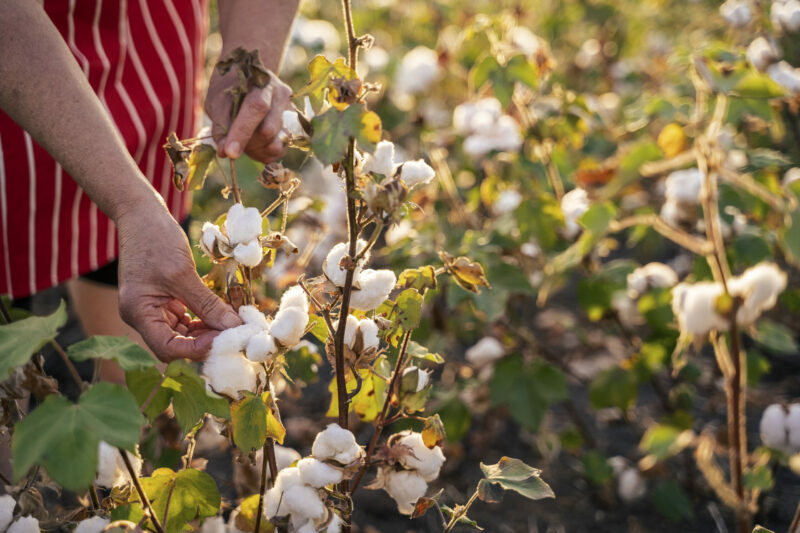The household herb garden

More time is spent inside than outside at this time of year. So, here is a look at the herb garden that you’ll find throughout the house. Words Marilyn Wightman
It is said the most poignant memories, the ones that are retained, involve the sense of smell. Inhaling sweet herbal smells is part of everyday life. Most people do this simple act daily, without stopping to consider the impact that herbs and plant-based products can have on us. There is a herbal connection in most household products: inside the kitchen cupboard, the laundry cupboard, the bathroom and the boudoir. So maybe it’s time to consider looking very closely at their labels.
Bathroom cabinet
First things first – getting up in the morning and cleaning your teeth. The minty flavour is reliant on the commercial production of mint plants to extract the essential oil ‘menthol’. Mint is just one of the many herbs grown on a vast scale, and the extracted essential oil is used in a range of ‘people products’. Cough lozenges and cough medicines often contain this essential oil. They contain oil of thyme, too, so look to see if ‘thymol’ is listed.
What else in the bathroom is herbal? Lavender and rose are both used in skin preparations. Again, the essential oil is extracted and used in skin creams, body rubs and soaps.
A large component of the human body is skin. Just look at yourself: everything making up the body is held there, in place, with skin. What happens after, say, five minutes of applying a herb-infused skin cream? Is it still there or has it been absorbed into the body?
Then there are deodorants, aftershaves and hair products, all of which include herbs in their formulas. Herb-based oils such as olive, sunflower and almond are natural and plant-based. Cheaper options are made using manufactured mineral oil. If the label says ‘petroleum’, it’s referring to petrol (as in the oil industry).
Laundry cupboard
Looking in the laundry cupboard, you may find a similar range of herb-laden products. Laundry powder with a fresh lemon scent, or maybe a range of other nice perfumes? Lemon, mint, lavender and pine are usually dominant in washing and cleaning products.
These all have antiseptic qualities so are ‘good to go’ on the benchtop, floor, shower, bath and loo. And how about that ‘grease-cutting’ lemon action? While there are plenty of chemicals involved in cleaning products, usually over the top of all these is a pleasant herbal scent.
Herbs are said to have evolved their scents as a response to threats in the environment. Developing fragrance relies on a complex set of chemicals. In some plants these are compounded to create a barrier against bacterial and fungal problems. Herbs have chemicals that may be antibacterial, antifungal and antibiotic.
Furnishings
Clothing and household furnishings use two other herbs. While wool products come from animals and silk from insects, cotton and linen are plant-based. Cotton (Gossypium sp.) has a dark past in that it was cultivated by African slaves. Taken from their homeland, they were transported across oceans, where they grew and harvested the cotton balls from plantations. These days, cotton is grown commercially and, with modern machinery, the harvest is much kinder.
Linen (Linum usitatissimum) is a summer annual herb that grows readily in New Zealand. It has naturalised and can be found along roadside areas. Its pretty blue flower is simple and obviously good at setting seed. I have it colonised through a herb patch. It is a 60cm tall annual that is spindly in growth, keeps to itself and is not a hindrance to other plants.
Other herbs used in fibre manufacture include kapok (Araujia hortorum) grown for the fluff that surrounds the seeds. Like cotton, it has to be ginned (separated) to remove seeds and extract the fibre. The seeds of each of these three herbs has further use for oil production; the spent seed hulls can also be used for animal fodder. Linen is grown commercially for linseed oil and flaxseed production.
Jute (Corchorus sp.) is a further crop-grown product. Like cotton, it belongs to the mallow family. However, jute is a tough fibre and is used for manufacturing ropes, sacks and mats. Sisal (an Agave) is another plant used to make rope and mats.
All these herbs are grown industrially to produce income for the grower and manufacturer. In New Zealand, we also have flax.
Sailors were the first to acknowledge the fibre and its uses, so exporting bundled flax was one of our first industries. Harakeke (Phormium sp.) was the fibre used by Māori. And, like these other herbs grown for the fibre, NZ flax also has numerous medicinal uses.
I have a personal connection to the Irish linen trade of the 19th century. My great grandmother Lillian Hamilton came out to Melbourne to marry James Walsh. He knew her back in Belfast and paid her sea fare. On their marriage certificate, it stated Lillian’s father was a ‘prepping master’. Being a teacher, I presumed, wrongly, he was perhaps employed by a school until it was discovered he had worked in a linen factory. As ‘prepping master’, he was on the production line responsible for preparing and processing to make high-quality thread.
